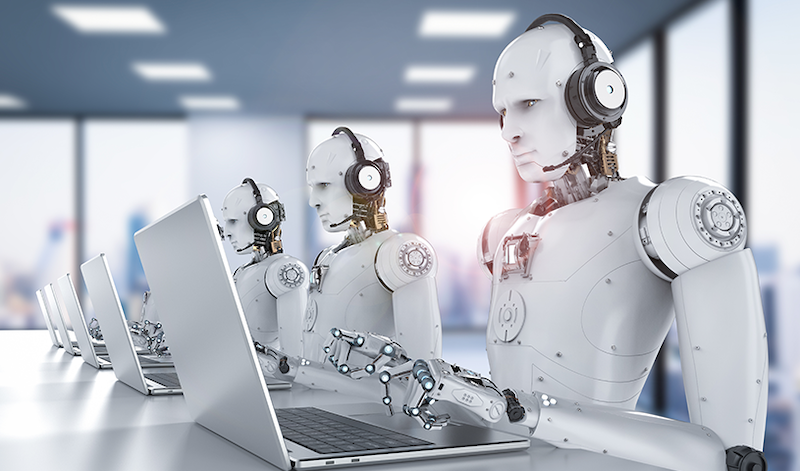
Automation and the workplace: 3 Ways robotics will transform the workplace as we know it
In a recent research released by Garner, it is revealed that 2 in 10 retailers will establish a robot resource center to oversee their non-human workers by 2025.
This comes as no surprise since the world has been gearing up for a robotic first future for quite a while. Globally, the robotics industry is expected to reach USD 74.1 billion by 2026- a compound annual growth rate of 17.45 percent from 2021.
Over 50 percent of US companies said they are planning to increase their investment in automation within the next few years, spurred on by the ongoing pandemic.
As companies and the tech industry alike scramble to increase their reliance on robotics and automation, the workplace as we know it will undergo a series of significant changes.
From a change in employee skill prioritization to a change in dynamics within manufacturing, here is what automation can mean for the future of the workplace.
The case for human labour will shift away from manual to more strategic capacities
With the use of automation and robotics is primarily used to replace (and improve) repetitive and redundant business processes, businesses will shift their recruitment criteria accordingly.
As automation plays a larger role in the workplace, companies will begin to focus more on the strategic capabilities that an employee can bring to the company instead of their physical abilities.
This makes sense since robots are now being deployed for most physical jobs like the autonomous trucks currently disrupting logistics. For instance, two of the most in-demand skills for employers are above-average analytical ability and change management skills.
With so much going on- and to come- from automation and robotics, being strong in change management is critical in steering a company into the future.
Continuous and real-time information will mean a competitive edge
One of the clear emerging benefits of technological advances like automation is the availability of real-time information.
This means businesses can be more adaptable, respond quickly when needed, and share information as it is happening. For most workplaces, this not only means they can improve their competitive edge with better planning, but they are also able to cut their costs.
In terms of labor costs, this means the workplace will look very different going forward. Real-time information sharing means outsourcing, remote working, and working with freelancers is now the norm.
There is no lag in communication, and businesses can shed unwanted labor costs from their budget at the same time. The key will lie in doing enough reconnaissance before recruiting a subcontractor and ensuring you ask questions on their current schedule, usual working hours, and preferred client-customer relationships.
The manufacturing industry stands to lose significant manual labour
Among the industries set to be hardest hit by automation and robotics, manufacturing continues to lead the list. A recently published paper from Boston University and MIT claims that robotics can replace up to 2 million workers in manufacturing by 2025.
The loss of jobs to automation is not a new trend. Between 1990 and 2007, approximately 400,000 jobs were replaced by automation in U.S. factories.
The efficiency of automation and robotics has recently resurfaced in practice, as industries like manufacturing have had to contend with worker health scares and affected production during the pandemic.
As a response, the use of robotics was amped up around the globe to replace the workers who were off sick, isolating, or to minimize the health risks to employees. It’s not just in manufacturing either.
At hospitals and universities, there was a rapid rollout of Sally, the salad-making robot who replaced dining hall employees.
The demand for digital skills will continue to take a front seat in the workplace, replacing experience.
Perhaps the real task will be to get the perfect harmony between workers and robotics in the workplace. With employees and robotics working alongside each other, businesses will be able to play off their strengths and enjoy the benefits of both.

